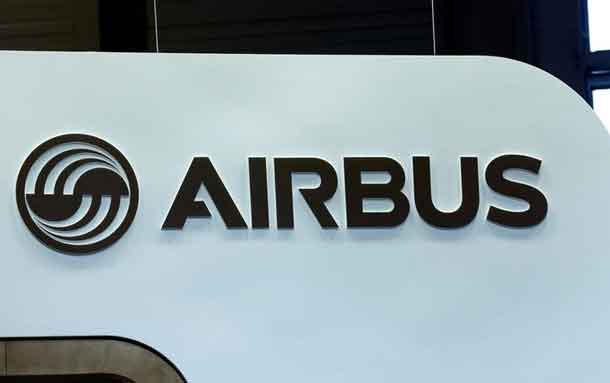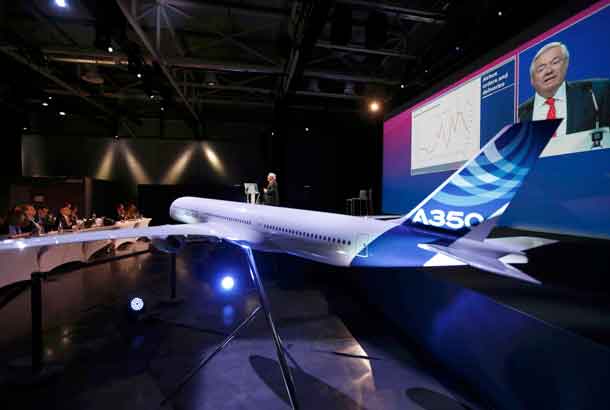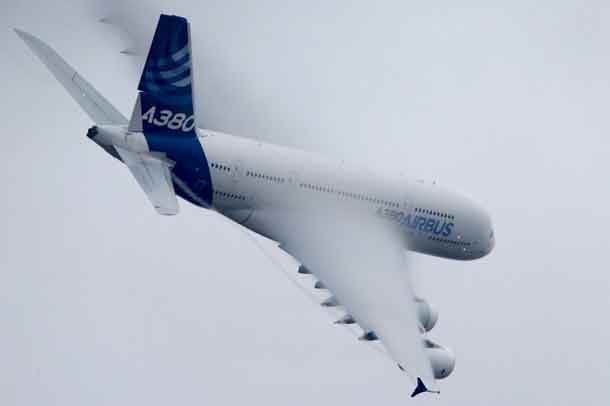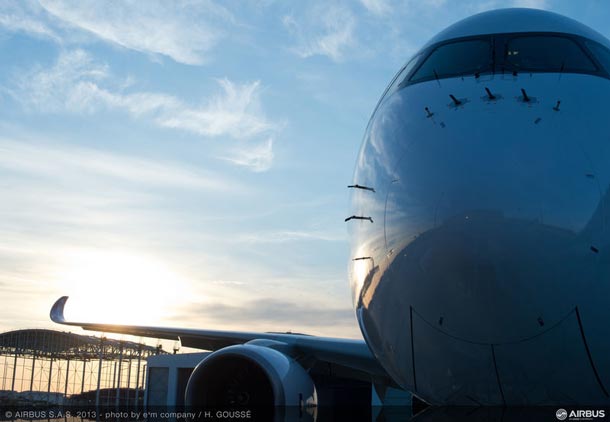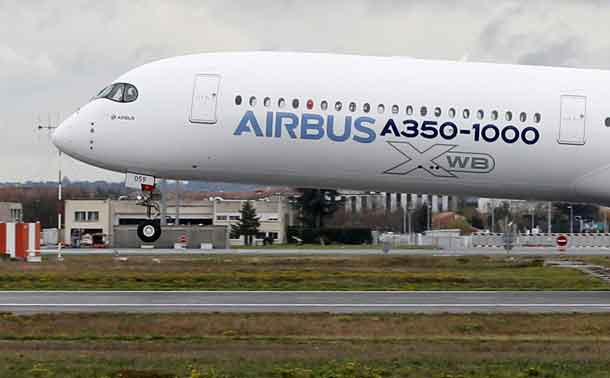

By Tim Hepher and Johanna Decosse
TOULOUSE, France (Reuters) – Europe’s largest twin-engined passenger jet, the Airbus A350-1000, took to the skies for the first time on Thursday, seeking to grab the spotlight from Boeing’s popular 777.
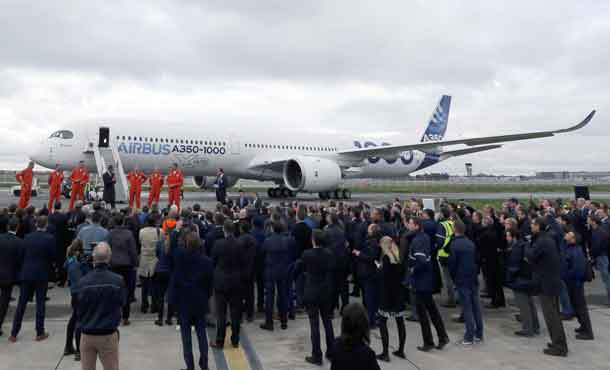
The lightweight carbon-fibre plane, 7 metres longer and able to carry 40 more people than A350s already in service, began a three-hour debut flight at 0942 GMT, watched by some of the airline bosses who have invested in the $356 million (285.68 million pound) jet.
It later returned to base after a 4 hour and 20 minute flight during which co-pilot Frank Chapman said it had performed “smoothly”, similar to its sister plane the A350-900.
The 366-seat A350-1000 is designed to break Boeing’s <BA.N> virtual monopoly in the lucrative “mini-jumbo” segment, typically involving large twin-engined jets carrying 350 people.
It is larger than the new-generation A350-900, which entered service last year. Both are built from similar advanced materials to Boeing’s mid-sized 787 Dreamliner in a race between planemakers for fuel savings and better passenger comfort.
The aircraft involved in Thursday’s Toulouse debut is one of three test planes facing 1,600 hours of intensive flight testing before the A350-1000 enters service in the second half of 2017.
Fabrice Bregier, chief executive of the planemaking division of Airbus Group, told Reuters he was confident the A350-1000 would be delivered on time to launch customer Qatar Airways.
“It makes me very happy and very proud. We are flying according to the timetable we had planned,” he said moments after the jet, weighing 230 tonnes, took off under leaden skies to applause from factory workers.
GRAPPLING WITH OTHER DELAYS
Bregier added he had grown more confident of reaching this year’s target of at least 50 A350-900 deliveries.11
While the first flight of its latest model took place on time, Airbus is grappling with delivery delays to the A350-900, clusters of which remain dotted around the airport in Toulouse, France, due to shortages of cabin equipment.
Smaller A320neo jets are also parked with missing engines, due to delays in supplies from Pratt & Whitney, highlighting the strain on the industry of adding new technology while securing record production targets.
Airbus programmes chief Didier Evrard said the planemaker continued to scrutinise its suppliers, notably France’s Zodiac Aerospace <ZODC.PA>, which said this week it was on a path to recovery following a production crisis at its factories.
Asked about the progress displayed by cabin and other suppliers for the A350 family, Evrard told Reuters: “It has improved, but it is not where it should be and we are watching them very carefully.”
He said the planemaker was working hard to achieve the target of 50 A350-900 deliveries this year, having reached 34 so far, with a further plane due to be delivered later on Thursday.
“I have already cancelled my holidays,” he added.
Airbus says the A350-1000 will be 25 percent cheaper to operate than the competing Boeing 777-300ER, an older aircraft which weighs more but which has more seats in some layouts.
Boeing has responded to the A350-1000 by developing an even larger version of 777 able to seat over 400 people, making it the largest twin-engined jet when it enters service in 2020.
Airbus is also considering whether to go up in size with a further stretch of the A350, but senior marketing vice president Francois Caudron said it did not currently deem this necessary.
Industry sources say Airbus is nonetheless offering the potential “A350-2000” to influential buyers including Singapore Airlines and British Airways.
Such a jet would need an enhancement of the Rolls-Royce Trent XWB engine that powers the A350-1000, already one of the industry’s largest with a fan case large enough to swallow the fuselage of the now defunct Concorde.
Chris Young, programmes director at the embattled UK engine manufacturer, which is in the midst of restructuring, said it would always be ready if needed to upgrade its engines or add new ones according to the needs of airplane manufacturers.
(Reporting by Tim Hepher, Johanna Decorse; Editing by Sudip Kar-Gupta and Mark Potter)

